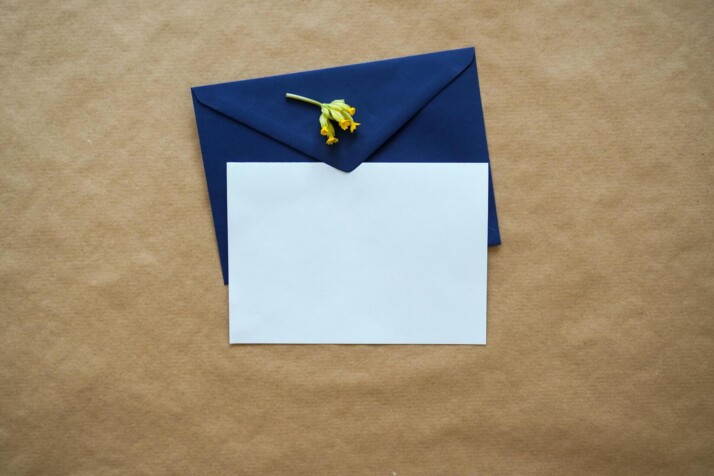An informal letter is a personal letter written in a casual and quick writing style. Informal letters address people you share no professional relations with, like family and friends. An informal letter format has a casual tone and conversational writing style.
What is an Informal Letter?
An informal letter is a written communication that is casual. It may include personal information, a brief account of events, and a request for advice, assistance, or recommendation. It follows a personal, lively and conversational tone.
The informal letter is also referred to as a casual or personal letter. Informal inspired writing is best when you wish to convey your thoughts to your dear friend, family members, or partner. Unlike a formal letter, it has a friendly and relaxed tone and demeanor.
An informal letter intends to address a quick, personal note to an acquaintance, family or friend. Its information is usually brief, concise and does not include formalities.

When to write an Informal Letter?
Below are several instances when you can write an informal letter.
- To express appreciation to a dear friend or family member for a gift. An informal letter of appreciation is a ‘thank-you card’.
- When writing to a business friend to inquire about their business.
- When writing to your romantic partner to apologize for your behavior.
- To your therapist to consult about your treatment plan for an upcoming therapy session.
- To your favorite childhood babysitter to thank her for all the years of love and support.
Informal Letter Format
An informal letter to a friend or a potential employer usually doesn’t follow a traditional formal letter format. Unlike a formal letter, the content and tone of an informal letter are conversational and relaxed.
The informal letter format can be used for creative, opinionated, or emotional letters. These guidelines will help you write a compelling informal letter.
1) Address
An essential component of an informal letter is the address of the writer. It is the first thing to write in an informal letter. Write the address at the top left-hand side of the page.
Whether writing to family or close friends, ensure you note the accurate and complete address. This will help the receiver write back to you if need be. When writing to someone in a different country, include your country in the address.
2) Date
The date needs to go at the top of the letter, just below the address. It is vital to write the date because it tells the reader when the letter was written.
It also gives them an idea of when they should write back. Ensure to write the complete date (i.e., the day, month, and year).
3) Greeting/Salutation
Since you are writing to familiar people, you can address them by their first name. You can also use the words “Dear” or “Dearest” as prefixes to the names (e.g., Dearest Evelyn, Dear Samuel).
You may choose to address the receiver by their relationship with you (Dearest Sister, My dear brother, Dear aunt). When addressing someone older than you, you may use prefixes like Mrs, Ms, or Mr to show respect.
4) Introductory paragraph
The tone of your letter can be set with a brief introductory paragraph. An excellent way to begin is to ask about the health and wellbeing of the recipient.
For example, I hope this letter finds you in perfect health. Ensure to write in a friendly and casual tone.
5) Body of the Letter
Here, you should explain the purpose of the letter and include relevant details. Remember to consider who you are writing to so as to decide the kind of tone to use.
When writing to a friend, you may use a more casual style than when writing to an older relative. Take care to be respectful, even though informal and friendly.
6) Conclusion
The conclusion is an important element of the informal letter. It serves to close the letter and make a lasting impression on the reader.
The conclusion should summarize the main points of the letter. End it in a friendly tone and affectionately say goodbye to the reader. Also, invite the reader to respond to your letter or write back.
7) Subscription/Signature
Close the letter with a dignified and courteous closing. A note that says “regards,” written in the bottom right or left corner can be used for a more professional touch.
A more casual tone is suitable when addressing a close friend, family, or relative. You can use: Yours sincerely, Your loving wife, Yours affectionately, Lots of love. A signature and name should follow the final greetings.
The Bottom line
An informal letter is typically written in a casual and conversational way.
As with a formal letter, the informal letter contains the writer’s address, date, salutation, body of the letter, conclusion, and subscription/ signature. When writing informal letters, it is best to use a friendly tone and be clear about the message you want to convey.
Explore All Casual Articles
A Creative Guide to Prose in Writing
What is prose? That’s the first question that comes to mind when trying to write spoken language in its ordinary…
Writing Informal Email for the B2 Exam
Being able to write emails in English is an essential skill. While it may look like it isn’t tricky, writing…
Writing an Informal 2 Weeks’ Notice Letter
You’ve landed a new, better job. Congratulations! Nevertheless, you must first give notice of your departure from your current role.…
What’s Informal Tone and Should You Use It?
Tone plays a significant role in writing. The tone of your voice is how you express your ideas. Included are…
What’s Informal Language & When To Use It?
No matter what you are writing, all writing styles can be identified as either formal or informal. You should know…
The Informal Cover Letter and Its Benefits
Cover letters are indispensable for many professional job applications and can help you sell yourself to your future employer. Writing…
